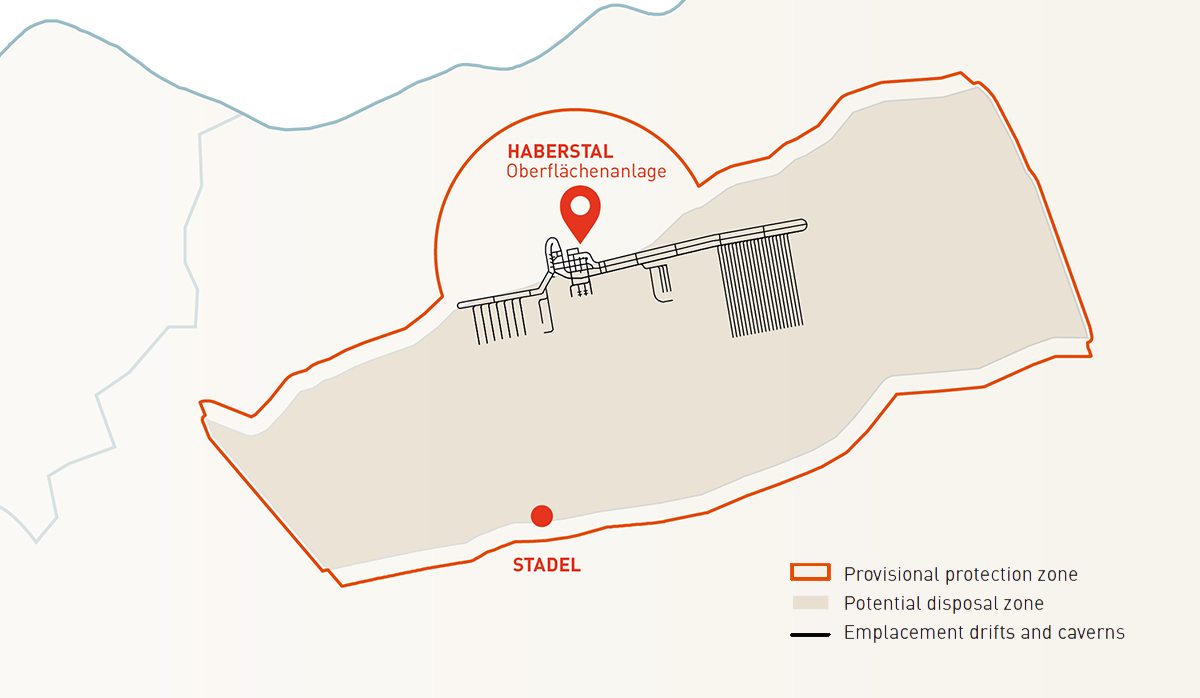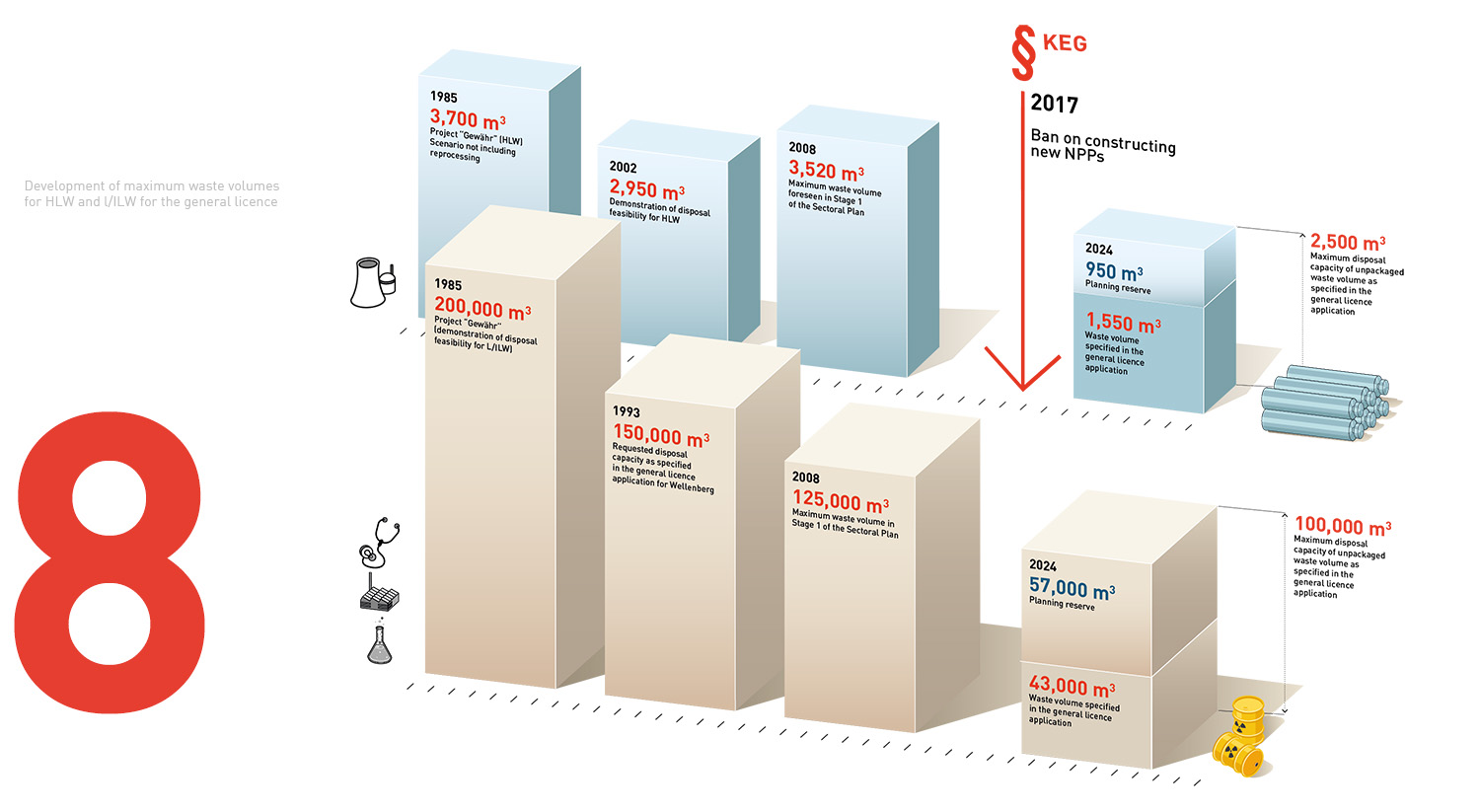In accordance with pdf ENSI requirements(1.39 MB) , the general licence application is based on the Model Inventory for Radioactive Materials ( pdf MIRAM(96.93 MB) ). MIRAM comprises the waste that exists today and a prediction of the waste that is still expected to be produced, assuming an operating lifetime of 60 years for the nuclear power plants currently in operation.
The provisional dimensions of the disposal areas are also based on this assumption. To ensure that the scope of the licence, which must comply with subsequent procedural steps, covers the temporal uncertainties connected with a century-long project, the general licence solely specifies the “approximate” dimensions of the most important structures and the “maximum disposal capacity”.
MAXIMUM DISPOSAL CAPACITY
The maximum disposal capacity specifies the maximum amount of waste that can be disposed of in the deep geological repository within the scope of the general licence. In addition to other time-related uncertainties, the fact that the operating licences for the Swiss nuclear power plants were granted for an indefinite time period and can thus produce electricity for as long as they are safe, must also be taken into account.
It is not possible to obtain a comparable licence for the deep geological repository as the Swiss Federal Office of Energy stipulates that the maximum disposal capacity must be specified in terms of volume. To ensure that this volume does not include other variables, Nagra proposes to define the maximum disposal capacity as unpackaged volume:
- For HLW, the proposal involves a maximum disposal capacity of 2,500 m3. This volume is around 1.5 times larger than in MIRAM and is based on the extended operation of the nuclear power plants currently in operation.
- For L/ILW, the proposal involves a maximum disposal capacity of 100,000 m3. This volume is around twice as large as in MIRAM and takes into account uncertainties regarding the volume of the decommissioning waste, an extended emplacement period for waste from medicine, industry and research and any changes in waste treatment procedures.
The justification of the maximum disposal capacities was developed in accordance with legal stipulations, in particular the ban on granting general licences for new nuclear power plants (Art. 12, KEG), which has been in force since 2017. The proposed maximum disposal capacities are significantly below the volumes on which the repository project was based in earlier project phases.
If the waste volume increases, the number of required HLW emplacement drifts and L/ILW emplace- ment caverns must increase correspondingly. The potential disposal zone (around 22 km2) has far more space available than that specified in the current spatial requirement (around 2 km2). This means that, even if the spatial requirement increases to the point that the maximum disposal capacity is reached, large spatial reserves remain to optimise and adapt the layout of the repository.
The impacts of increasing gas pressure can be countered independently of the waste volume or the size of the repository, e.g. by ensuring a sufficient gas storage volume. In general, the size of the repository and thus the gas storage volume increase roughly in proportion to the volume of the waste.
When considering the impact of heat on the barrier properties, the focus must be on the near-field, as heat generation primarily affects the immediate vicinity of the disposal canisters. The preservation of the barrier properties can thus be regulated by loading the disposal canisters in such a way as to limit the thermal output and by controlling the distance between the disposal canisters and the emplacement drifts.
Not all conclusions on post-closure safety are exactly proportional to the waste volume, but due to the large spatial reserves for the layout, qualitative statements using proportional assumptions are justifiable. Since the radiological consequences based on the expected waste volume are many times below the stipulated protection criterion, this criterion will be met even if the maximum individual dose were to increase proportionally to the waste volume.
CONCLUSIONS
Conclusions on the safety of the deep geological repository in the event that the maximum disposal capacity is reached are therefore already possible today. Due to the large spatial reserves for the repository layout, post-closure safety will remain ensured even if the maximum disposal capacity is reached.
In addition, the licensing procedure stipulates that the safety case must be confirmed in future project phases, taking into account project developments featuring an increasing proportion of existing waste and a decreasing proportion of predicted waste.


